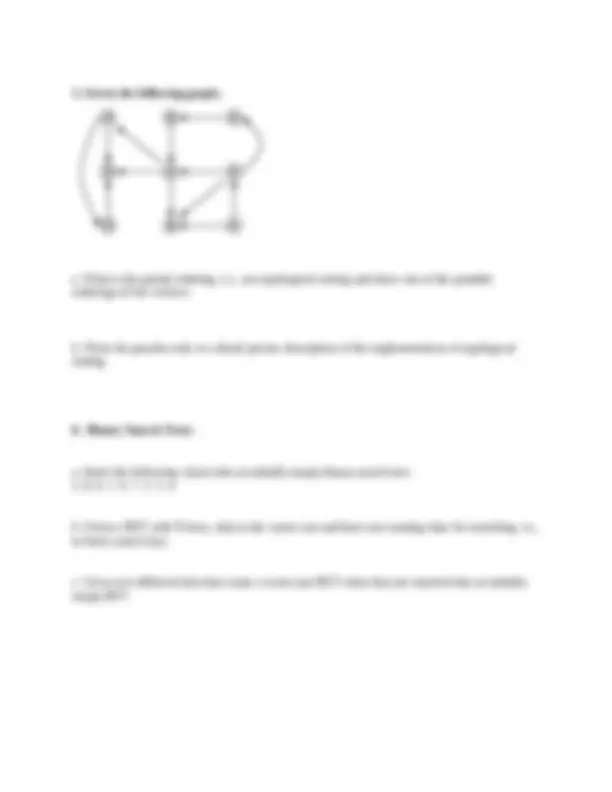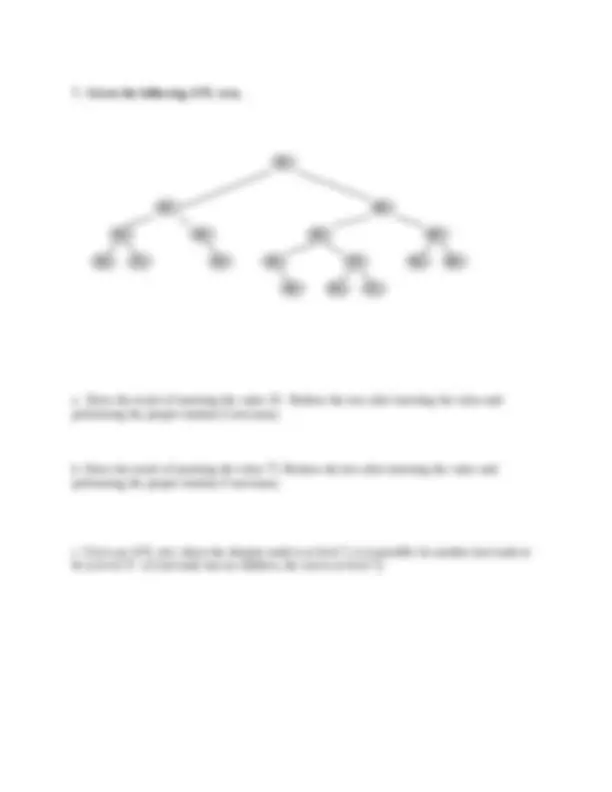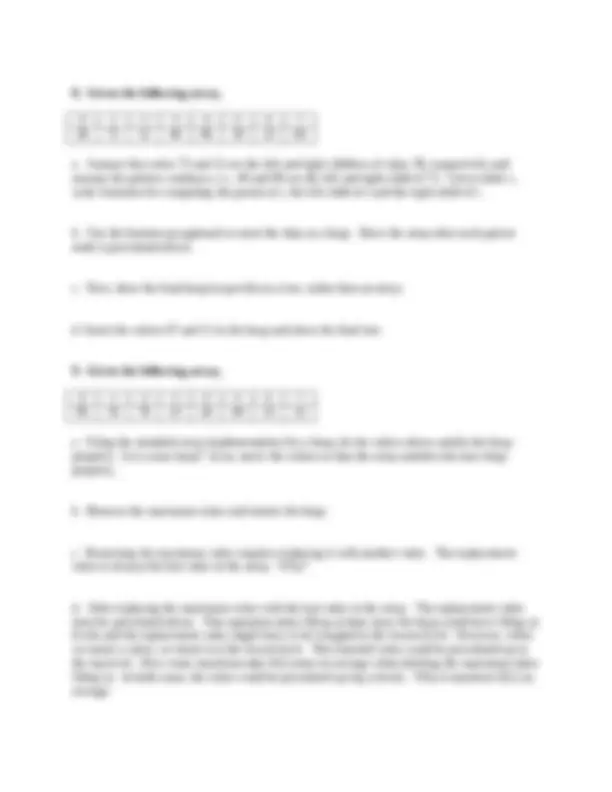





Study with the several resources on Docsity

Earn points by helping other students or get them with a premium plan


Prepare for your exams
Study with the several resources on Docsity

Earn points to download
Earn points by helping other students or get them with a premium plan
Community
Ask the community for help and clear up your study doubts
Discover the best universities in your country according to Docsity users
Free resources
Download our free guides on studying techniques, anxiety management strategies, and thesis advice from Docsity tutors
Material Type: Exam; Class: Analysis of Algorithms; Subject: Computer Science; University: Siena College; Term: Unknown 1989;
Typology: Exams
1 / 7

This page cannot be seen from the preview
Don't miss anything!




List of Topics: Graphs (5.1 - 5.3) Adjacency List Implementation Adjacency Matrix Implementation Depth First Search (DFS) Decrease & Conquer Breath First Search (BFS) Decrease & Conquer Topological Sorting Decrease & Conquer Trees (6.1 - 6.4) Binary Search Trees (BST) Transform & Conquer Balanced Binary Search Trees (AVL) Transform & Conquer Single Rotation of AVL Trees Transform & Conquer Double Rotation of AVL Trees Transform & Conquer Heaps (6.4) Making a heap (Top-down method) Transform & Conquer Making a heap (Bottom-up method) Transform & Conquer Heap insertion Transform & Conquer Deleting Minimum & Restoring the heap Transform & Conquer Heapsort Transform & Conquer Hashing (7.1 & 7.3) Bucketsort Special Topic Radixsort Special Topic Shortest Paths (8.2 & 9.3) Floyd’s Algorithm Dynamic Programming Dijkstra’s Algorithm Dynamic Programming
1. Given the following graph, a. Draw the adjacency list b. Draw the adjacency matrix c. Is the graph connected? Is there a path from ever vertex to every other vertex? 2. Given the following graph, a. Perform a DFS and draw the DFS tree b. Perform a BFS and draw the BFS tree
7. Given the following AVL tree, a. Show the result of inserting the value 45. Redraw the tree after inserting the value and performing the proper rotation if necessary. b. Show the result of inserting the value 75. Redraw the tree after inserting the value and performing the proper rotation if necessary. c. Given an AVL tree where the deepest node is at level 5, is it possible for another leaf node to be at level 3? (A leaf node has no children, the root is at level 1) 10 27 20 44 40 58 56 65 72 70 83 96 90 30 60 80 50
8. Given the following array, 0 1 2 3 4 5 6 7 38 72 12 46 96 50 23 84 a. Assume that value 72 and 12 are the left and right children of value 38, respectively and assume the pattern continues, i.e., 46 and 96 are the left and right child of 72. Given index i, write formulas for computing the parent of i, the left child of i and the right child of i. b. Use the bottom-up approach to store the data as a heap. Show the array after each parent node is percolated-down. c. Now, draw the final heap in part (b) as a tree, rather than an array. d. Insert the values 67 and 11 in the heap and show the final tree. 9. Given the following array, 0 1 2 3 4 5 6 7 96 34 78 23 28 60 52 22 a. Using the standard array implementation for a heap, do the values above satisfy the heap property. Is it a max heap? In no, move the values so that the array satisfies the max heap property. b. Remove the maximum value and restore the heap. c. Removing the maximum value requires replacing it with another value. The replacement value is always the last value in the array. Why? d. After replacing the maximum value with the last value in the array. The replacement value must be percolated-down. This operation takes O(log n) time since the heap could have O(log n) levels and the replacement value might have to be swapped to the lowest level. However, when we insert a value, we insert it at the lowest level. This inserted value could be percolated-up to the top level. How come insertions take O(1) time on average when deleting the maximum takes O(log n). In both cases, the value could be percolated up log n levels. Why is insertion O(1) on average.
**12. Given the following graph, show the adjacency matrix after each step of Floyd’s algorithm.